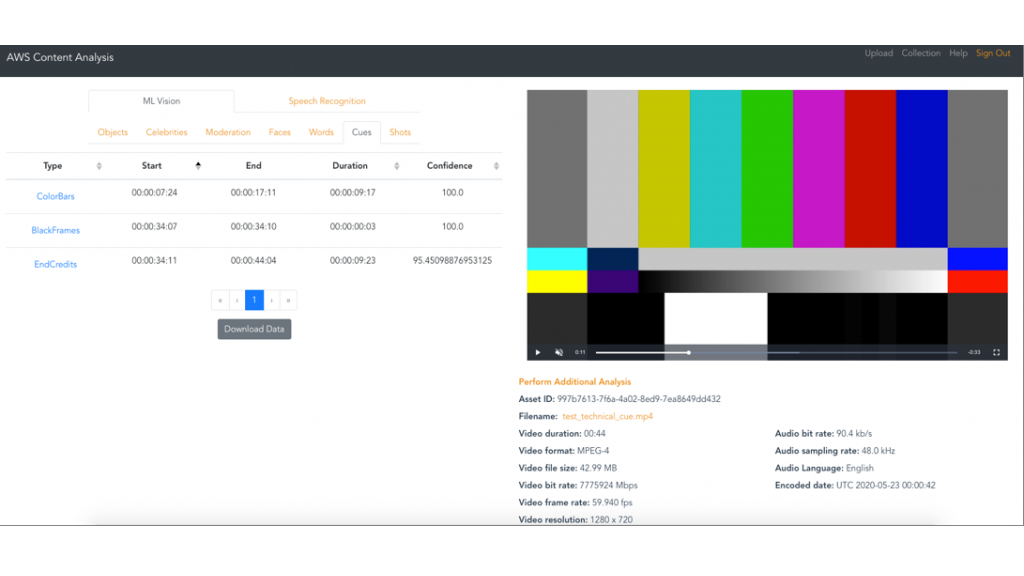Amazon Updates Video Segment Detection Software
New features for Rekognition include support for credits, slates and logos

Amazon today announced new features for its Rekognition video segment detection API that uses machine learning to allow VOD providers to automatically detect frame accurate end credits, black frame segments, shot changes and color bars. The update now includes support for four new types of segments: opening credits, content segments, slates and studio logos. It also improves accuracy for credits and shot detection and new filters to control black frame detection.
Introduced a year ago, Rekognition video segment detection gives VOD providers the ability to automate media analysis tasks, specifically the detection of black frames, end credits, shot changes and color bars, using fully managed, ML-powered APIs. Amazon says Rekognition’s video segment detection capability can help reduce review time from hours to minutes, cut costs of manual operations by up to 5x and prepare archived content for VOD on short turnaround.
For the new features, Rekognition automatically detects frames for opening and closing credits for movies or TV shows and identify the start and end of “slates,” which are sections that appear at the beginning of videos, and include text metadata about the episode, studio, video format, audio channels. This makes it easier for operators to use the metadata for analysis or remove slates when prepping for streaming services.
The update also allows operators to now be able to identify and review production studio logos that appear at the beginning of on-demand content as well as identify the start and end of content segments to review for runtime and customize content in different languages for international markets.
More information is available at Amazon’s blog.
Get the TV Tech Newsletter
The professional video industry's #1 source for news, trends and product and tech information. Sign up below.
Tom has covered the broadcast technology market for the past 25 years, including three years handling member communications for the National Association of Broadcasters followed by a year as editor of Video Technology News and DTV Business executive newsletters for Phillips Publishing. In 1999 he launched digitalbroadcasting.com for internet B2B portal Verticalnet. He is also a charter member of the CTA's Academy of Digital TV Pioneers. Since 2001, he has been editor-in-chief of TV Tech (www.tvtech.com), the leading source of news and information on broadcast and related media technology and is a frequent contributor and moderator to the brand’s Tech Leadership events.

